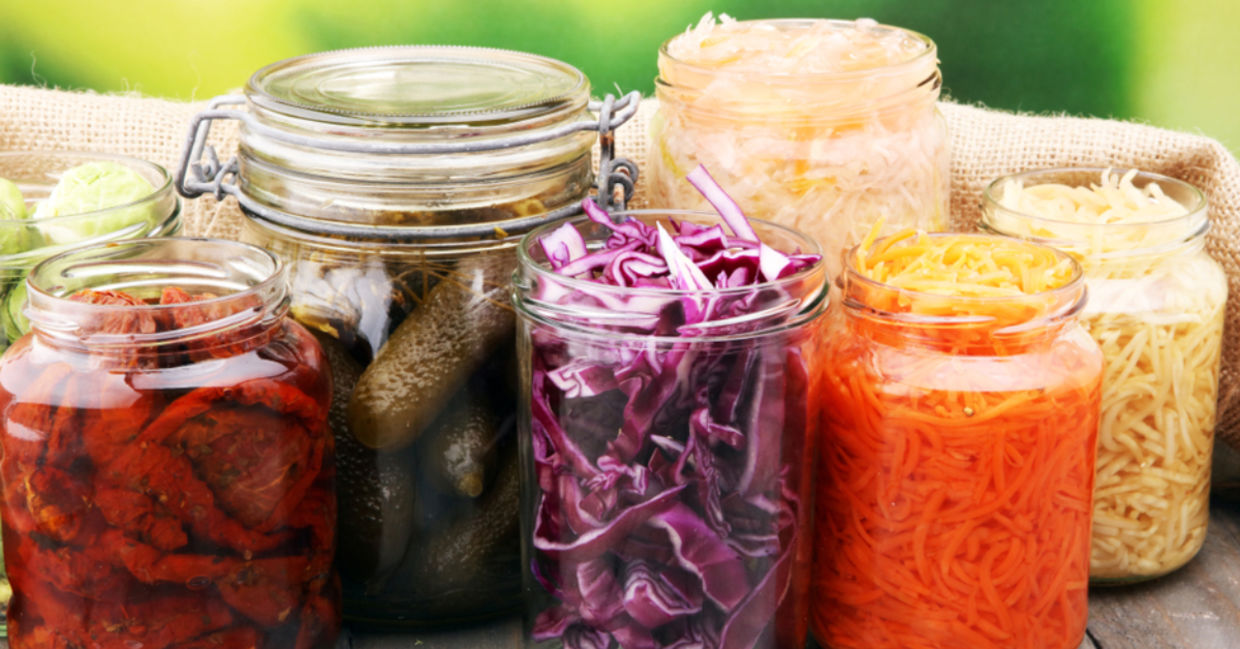
(beats1 / Shutterstock.com)
Including fermented foods in your diet is important when it comes to health. Fermented foods help reduce inflammation and promote diversity in your microbiome, according to a study in Cell, published August, 2021. Kefir, kombucha, and kimchi are popular choices, however a colorful array of vegetables can be easily fermented right at home.
Having a healthy microbiome may also be connected to mental clarity, a reduction in stress, a healthier immune system, and improved moods. The fermentation process creates lactobacillus bacteria, a fancy name for probiotics, according to Fermenters Kitchen. These gut-friendly bacteria may also help with digestion as the fermentation process breaks down hard-to-digest cellulose.
Fermented veggies are easy to prepare, have a long shelf life, and do not require any special ingredients. When you make your own natural probiotics, you will need mason jars with lids, a kitchen scale, a knife, and a chopping board. Wash well with soap and water; the cleaner your equipment and hands, the better chance the beneficial bacteria have to survive, according to kitchn. Some recipes call for mashing the cabbage to produce juice, while others call for adding filtered water. Just remember to “burp” your fermenting veggies daily.
Here are five healthy food recipes to get you started with fermenting. Become a home fermenter today and get that good gut feeling!
Sauerkraut
Aside from pickles, crunchy, tangy sauerkraut may be one of the best-known fermented vegetables. Sauerkraut is basically chopped cabbage and sea salt.
This recipe from Cultured Guru dresses up your cabbage with the addition of roasted garlic and peppercorns.Use a whole green cabbage and choose one with outer leaves as the insides will be better hydrated. Roast the garlic head without oil, then add the peeled cloves to the chopped cabbage along with black pepper and sea salt.
After you follow the recipe for exact weights, add filtered water, place in a mason jar and tamp down. To make sure it stays submerged, place a weight on it. Cap and place in a warm room for a minimum of 21 days. It should have a satisfyingly sour smell. At this point, you can refrigerate your sauerkraut, enjoying its probiotic benefits for up to six months.
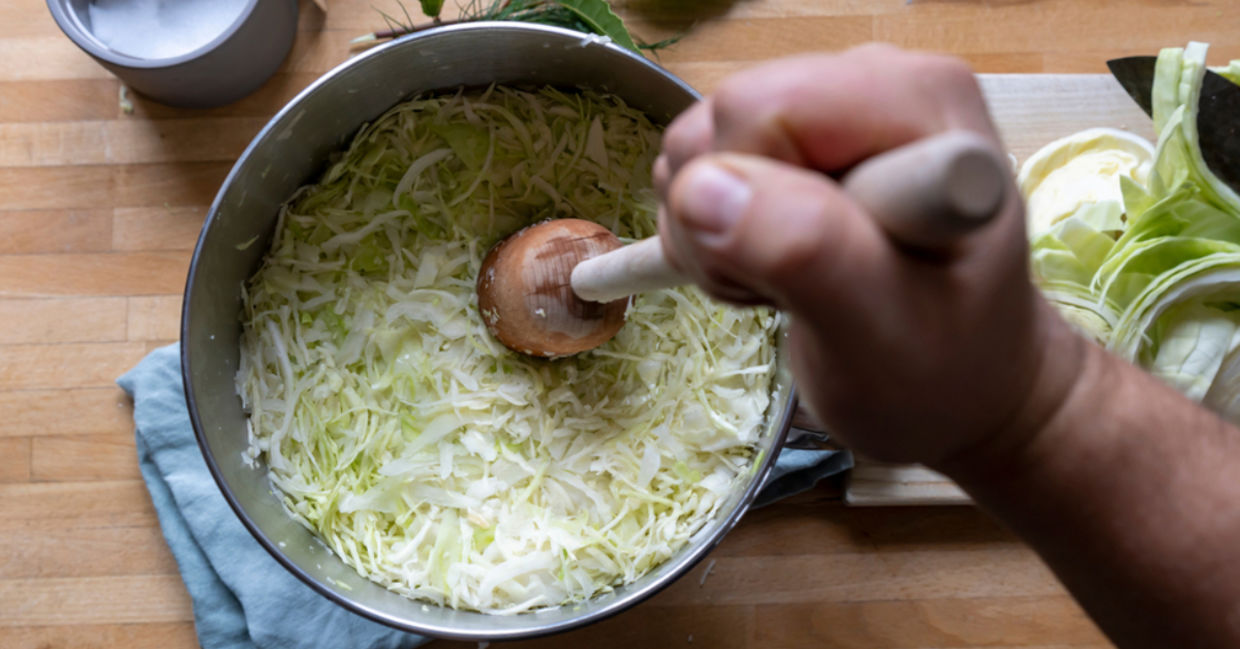
(Gabor Tinz / Shutterstock.com)
Simple DIY Pickles
Tart, salty, and sour, pickles are oh so crunchy and satisfying, be it in a sandwich or for a midnight snack. This easy and basic pickle recipe from Running to the Kitchen calls for Kirby cucumbers, peppercorns, anise seeds, garlic, white vinegar, and water. Combine the ingredients, making sure the cucumbers are submerged, cover, and refrigerate for two weeks. (If you do get a craving, you can raid your pickle jar after just 12 hours and enjoy that crispy tang!)
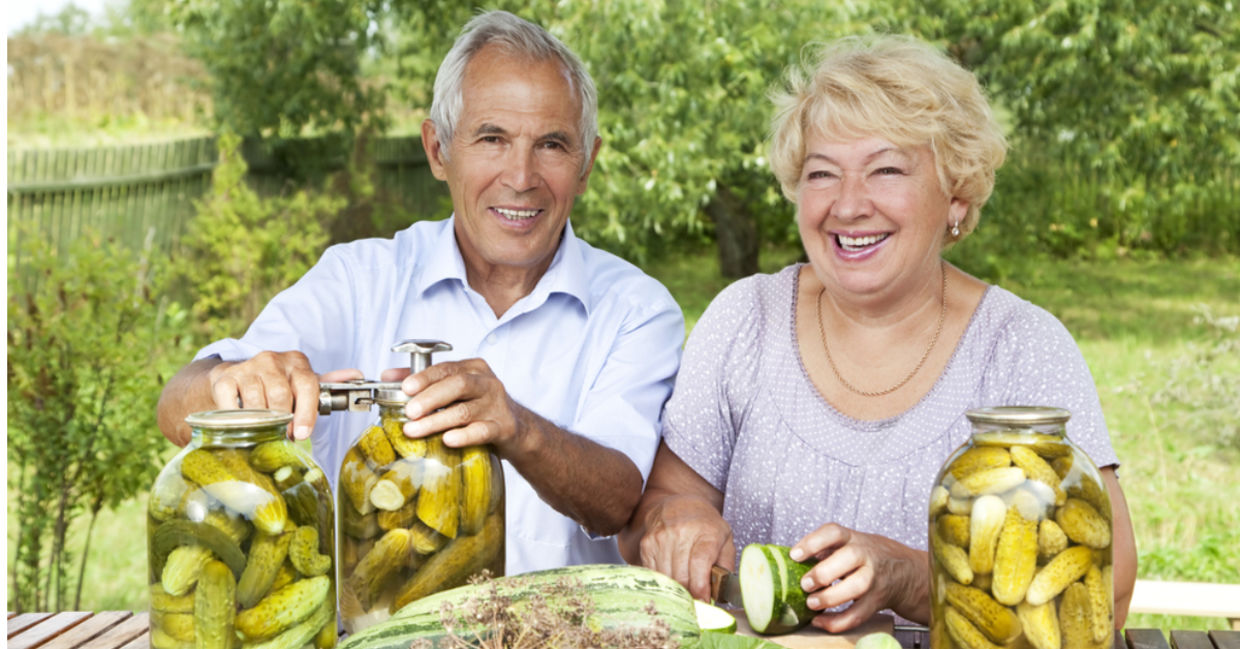
(Kuznetsov Alexey / Shutterstock.com)
Ginger, Beet and Red Cabbage Sauerkraut
This recipe from Cultured Guru is healthy for your microbiome, with its antioxidant properties. Purple cabbage is colorful to use, plus it has more vitamin C, flavonoid antioxidants, and carotenoids than its green sister. As for beets, they brim with folate, magnesium, and potassium.
Using the recipe for exact weights, chop the cabbage and weigh, then do the same with the beets. Add freshly grated ginger, then weigh your salt and filtered water. Mix, add to a mason jar, tamper until it is submerged, seal, and weight it down. You will be able to eat your sauerkraut after three to four weeks.
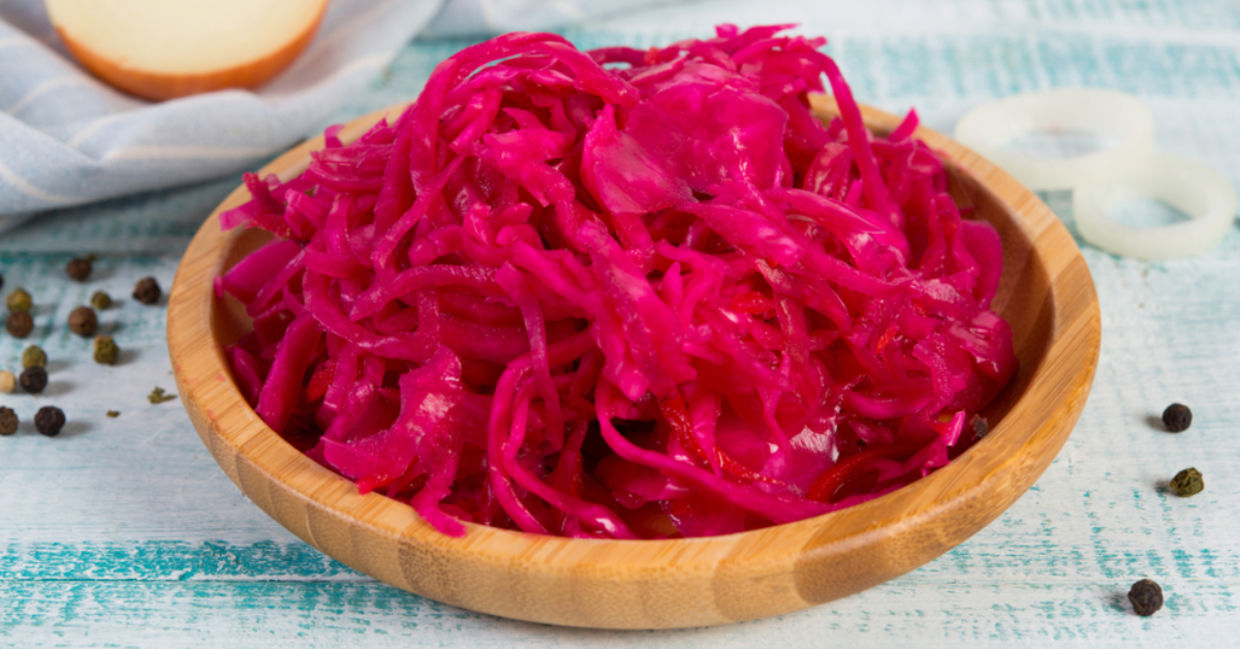
(Gorenkova Evgenija / Shutterstock.com)
Lacto-Fermented Carrots
Lacto fermenting, another way of saying fermenting, is named after the lactobacillus bacteria produced during the process, according to Fermenters Kitchen. These fermented carrots are actually higher in nutritional value than regular carrots as they have enhanced amounts of minerals, vitamins, and enzymes.
You can add onions, ginger, garlic, dill, diced jalapeno, or other herbs to this fermented carrot recipe. The tannins found in a bay leaf, grape leaf, or tea bag will help prevent the vegetables from becoming soft, so go ahead and add one of these.
Consult the recipe for exact measurements, adding water and dissolved sea salt to the carrot sticks and spicy ingredients. Cover completely and top with a fermentation weight. Fermenters Kitchen offers many practical solutions to keep your fermenting veggies submerged, such as using a heavy piece of cabbage, an apple, or a Ziploc bag filled with water. Store for ten to 20 days, then enjoy. They will stay fresh in the fridge for months.
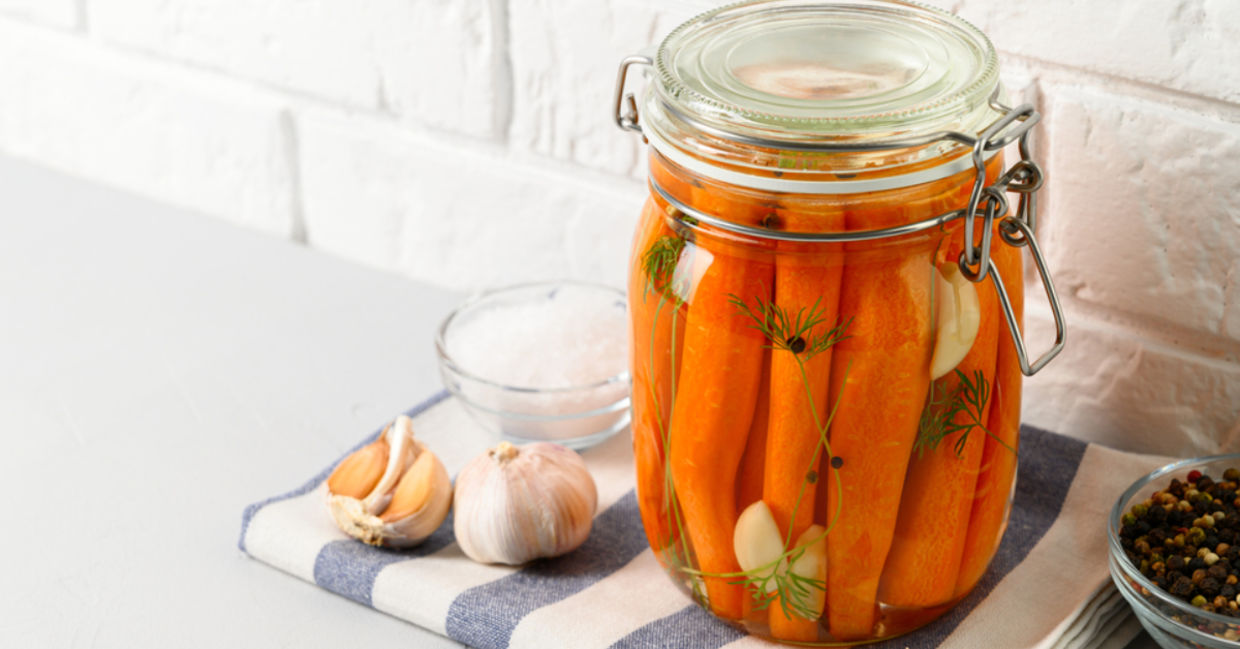
(Ramil Gibadullin / Shutterstock.com)
Easy Fermented Zucchini
As zucchinis are similar to cucumbers, they are a great vegetable to ferment. You will need fresh, firm, small, organic zucchinis for this recipe by Cultured Guru. Fermented zucchinis, like other fermented vegetables, could be a mood boost because they contain the neurotransmitter GABA, which may help improve mood and reduce anxiety.
Cut your zucchinis into spears or spirals, as long as they are thick. Use the recipe for exact measurements, adding salt, lemon slices, red pepper flakes, and thyme for extra flavor. Cover with water, cap, burp, and wait. As zucchinis ferment faster than other veggies, you can eat them within two weeks.
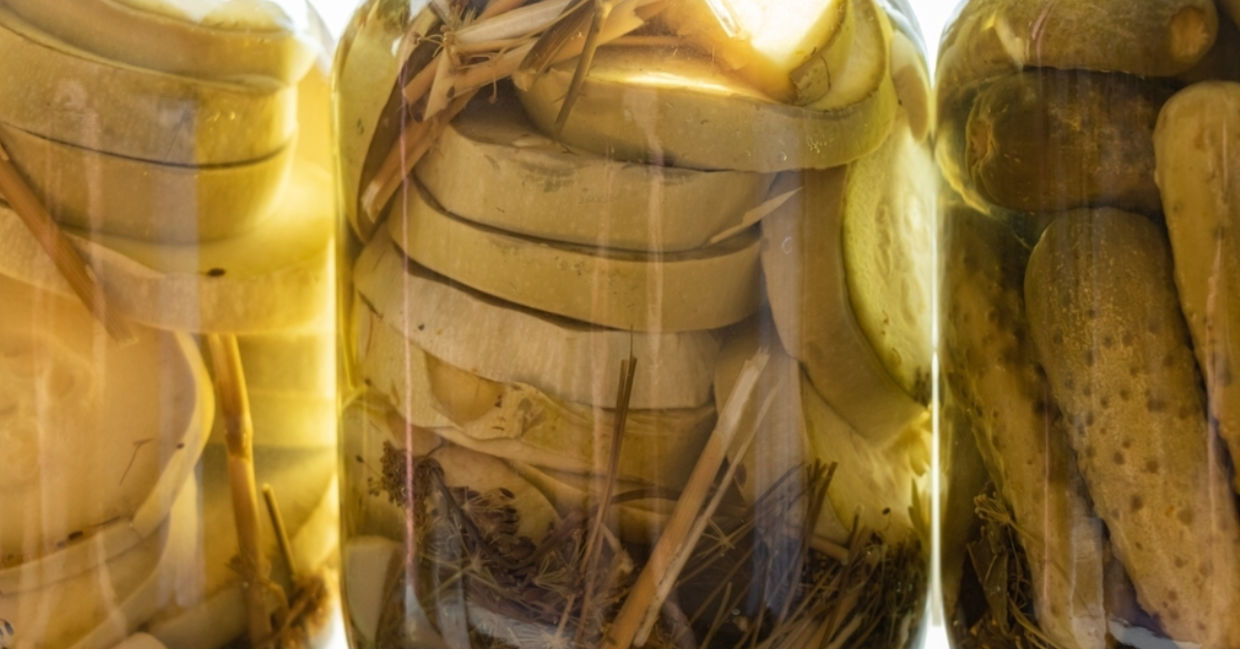
(Svitlana Ozirna / Shutterstock.com)







